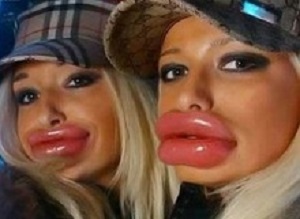 Recognising the perceptual threshold for when lips appear unnatural is important to avoid an undesirable outcome in lip augmentation. A study in JAMA Plastic Surgery attempts to provide data on balanced augmentation.
Recognising the perceptual threshold for when lips appear unnatural is important to avoid an undesirable outcome in lip augmentation. A study in JAMA Plastic Surgery attempts to provide data on balanced augmentation.
The study by Dr Sang W Kim, of the Natural Face Clinics, Syracuse, New York, and co-authors attempts to provide data on balanced augmentation. The study used incrementally digitally altered photographs of a female model’s lips and included 98 usable responses to an internet-based survey.
“We recognise that quantitative measurement of the lips as a fixed guideline for lip augmentation is neither practical nor realistic. There are too many variables to assume that a strict set of measurements can predict the subjective perception of the lips. The goal of this study was to provide some quantitative measurements to help guide clinicians in counselling their patients who are seeking lip augmentation,” the article concludes.
Abstract
Importance: Recognizing the perceptual threshold for artificial-appearing lips is important to avoid an undesirable outcome of treatment.
Objective: To characterize the quantitative measurements for the perceptual threshold of artificial- and unnatural-appearing lips.
Design, Setting, and Participants: Photographs of a female model’s lips were digitally altered incrementally in 5 sets of features (the upper lip, lower lip, upper and lower lips, and shape of the Cupid’s bow). From December 1, 2013, to January 30, 2014, participants viewed the photographs in random sequence using an online survey and responded to 2 questionnaires after each photograph. The participants were prompted to respond whether each altered photograph of the lips appeared to have received any cosmetic treatment, and whether the lips looked attractive and natural or artificial and unnatural. The measurement of each lip at which 50% of the observers perceived the lips as being treated and 50% of the observers perceived the lips as being artificial was determined. The difference in these 2 measurements was defined as dTA50, which represents the threshold differential between the perception of treated lips and artificial lips for 50% of the observers.
Main Outcomes and Measures: Survey responses of the participants to the appearance of the lips in the photographs.
Results: A total of 98 participants (76 females and 22 males; mean age, 42 years) provided usable responses to the survey. Each area of the lips had a unique quantitative measurement at which the observers perceived the lips as being treated and artificial. Enhancement of the upper lip alone had a narrower margin for artificial appearance (dTA50, 0.9 mm) compared with enhancement of both the upper and lower lips (dTA50, 1.5 mm). Any alteration to the Cupid’s bow resulted in the narrowest margin for artificial appearance (dTA50, 0.3 mm). The difference in the perceptual threshold between the age of the observers was the most significant for the upper lip.
Conclusions and Relevance: The perceptual threshold for treated and/or artificial appearance is unique for each area of the lips.
Authors
Sang W Kim, Daniel E Rousso
[link url="http://media.jamanetwork.com/news-item/what-is-threshold-for-lips-perceived-as-artificial-unnatural-appearing/"]JAMA material[/link]
[link url="http://jamanetwork.com/journals/jamafacialplasticsurgery/fullarticle/2617184"]JAMA Plastic Surgery abstract[/link]
